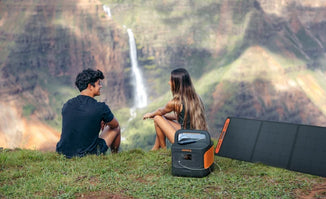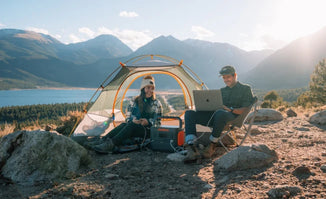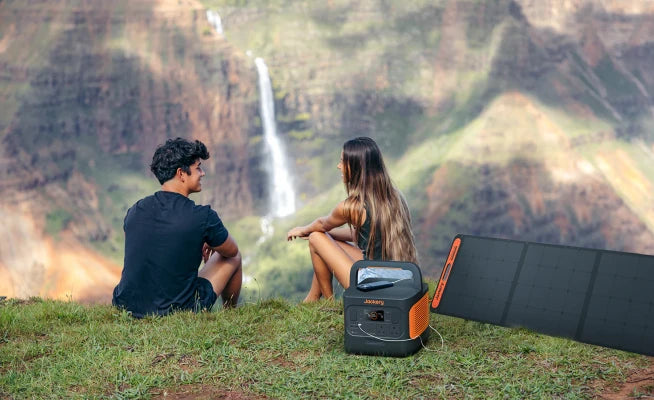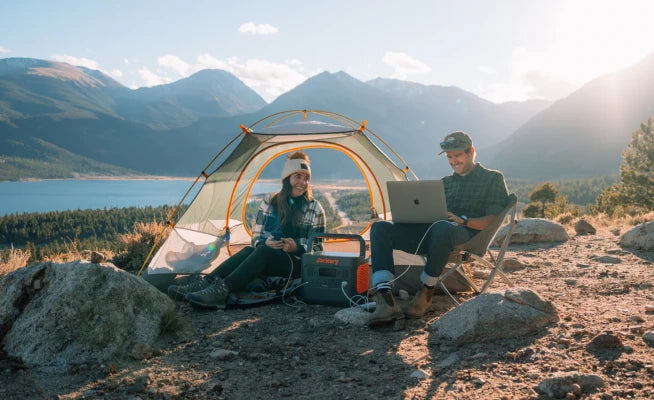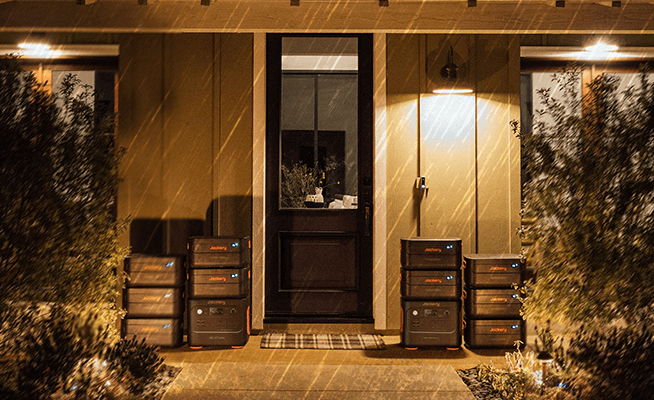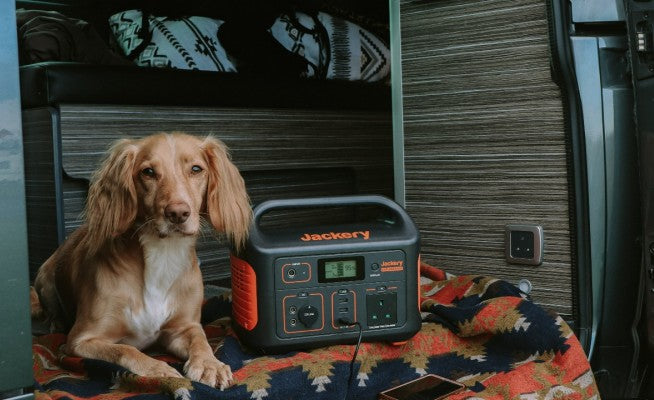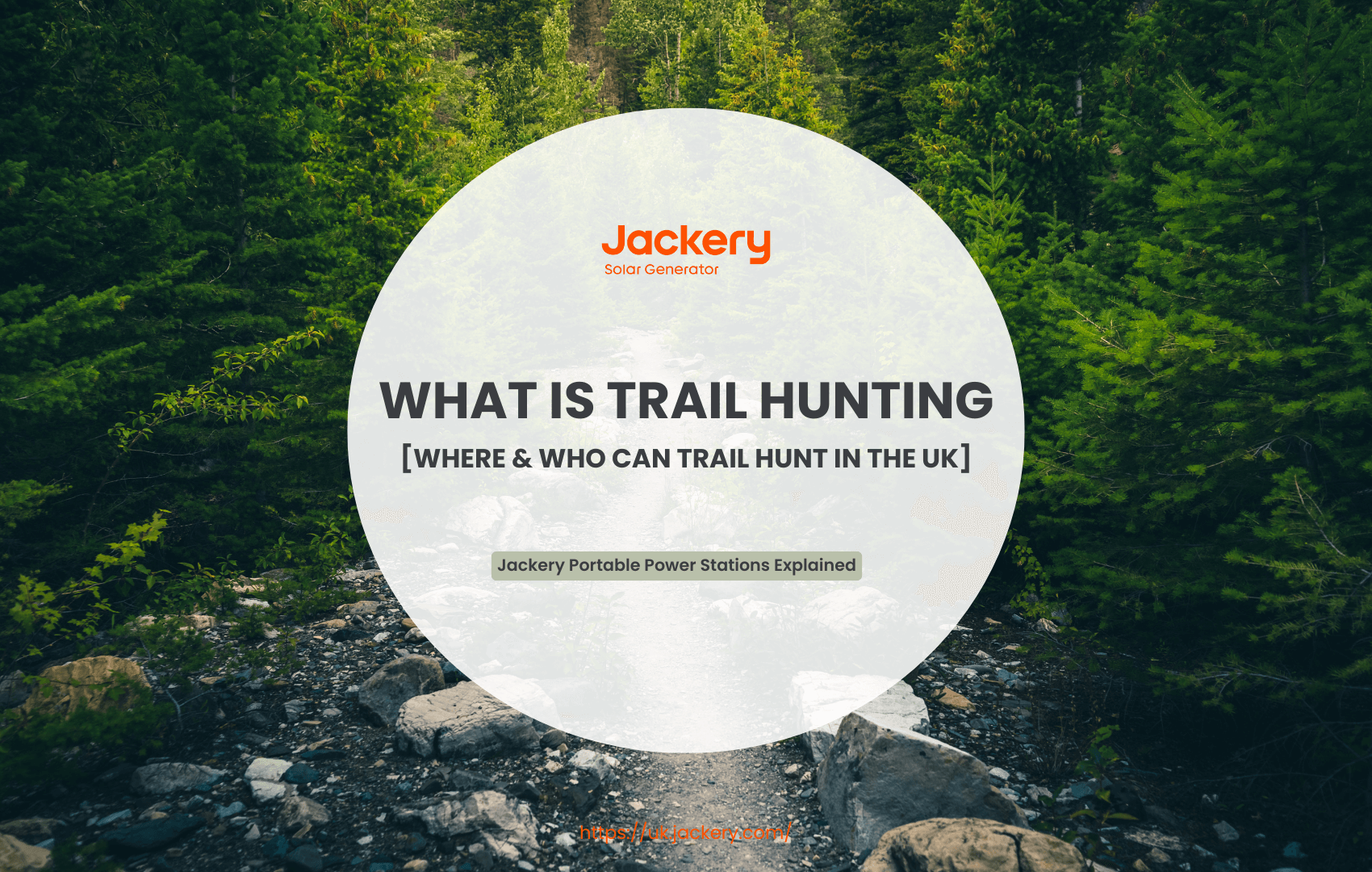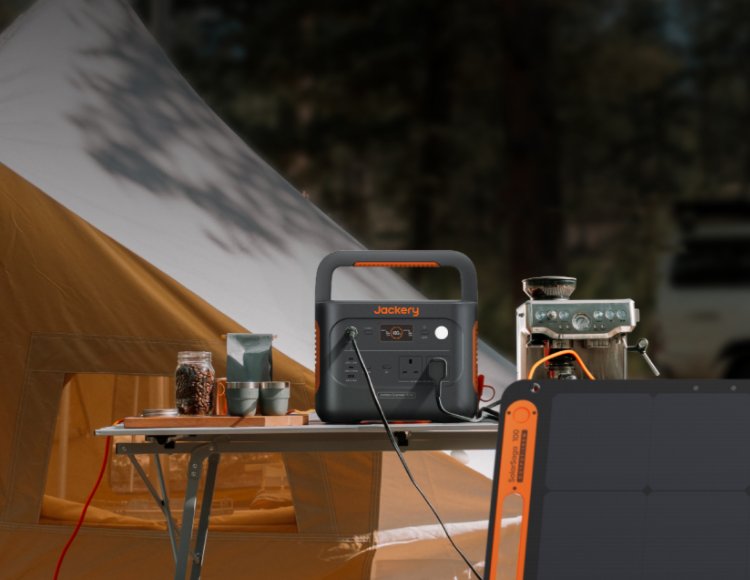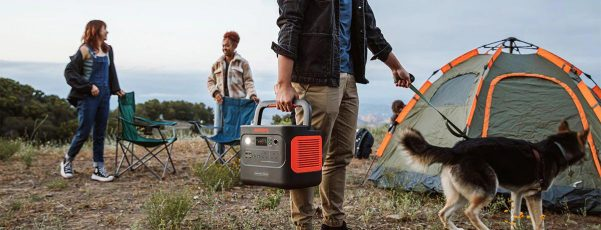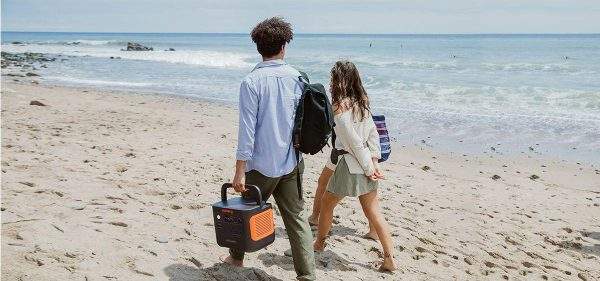Traditional hunting involves chasing and killing animals, but it was banned in England, Wales and Scotland in the early 20th century. Then, trail hunting came into being. So, what is trail hunting? Trail hunting is a legal activity in the UK under the Hunting Act, which came into effect in 2025. However, its true intentions and practical effects have been questioned and controversial, and opponents believe that it often becomes a cover for illegal hunting and maintains the culture of killing wild animals.
This blog will explore trail hunting and its purpose, origins, differences from drag hunting, controversies, and future developments.
|
Key Takeaways: |
|
● Trail hunting is an activity that simulates the traditional form of hunting with hounds and horses. Its primary purpose is to simulate and continue the conventional form of hunting within the legal framework. ● Trail hunting retains some elements of traditional fox hunting in form, while drag hunting explicitly does not use live prey or real prey scent, which can reduce the risk of wild animals being chased or killed. ● The origin and development of trail hunting are closely related to the 2005 Hunting Act. It is an alternative form of hunting after traditional hunting was banned by law. ● Some controversies about trail hunting in recent years include whether it is used as a cover for illegal fox hunting, difficulties in law enforcement, and frequent conflicts and harassment. ● We highly recommend the Jackery Portable Power Station, like the Explorer 300 Plus or 240 v2 portable power station, for powering electronics and devices during hunting trips. |
What Is Trail Hunting?
Trail hunting is an activity that simulates traditional horse-riding hunting with hounds, but the key difference is that it does not pursue and kill real wild animals.
Before trail hunting begins, a trail of animal urine (most commonly fox urine) is left in advance, which is then followed by a pack of hounds and hunting followers. The overall hunting scene for trail hunting is much the same as it has been for hundreds of years. For example, people still wear traditional hunting clothes when trail hunting.
What Is the Scent of Trail Hunting?
Trail hunting relies heavily on the hound's excellent sense of smell. In trail hunting, hounds use the urine of foxes, hares or other animals to deliberately leave a scent trail in the natural habitat of these animals. Fox urine is the most commonly used smell for trail hunting. This is mainly done to replicate the experience of chasing real animals.
Where Can Trail Hunting Be Carried Out?
Trail hunting is primarily done in rural regions and involves crossing immense tracts of land. Open fields, meadows, forests, and other areas make excellent trail hunting habitat. Avoid roads, railways, villages, livestock-intensive regions, and other places with a risk of conflict or danger. Whether you are trail hunting on private, national, or public land, you must receive explicit authorisation from the landowner or relevant management body. Entering the land without permission is illegal trespassing.
Who Can Trail Hunt?
Hunting has historically been a symbol of aristocracy. Today, trail hunting is organised by licensed hunting organisations, and everyone is welcome to participate in trail hunting. These organisations usually have a long history, with a professional hunter responsible for managing the hounds, and several horse-riding assistants to help control the dog pack.
Usually, you only need to join a local hunting association or organisation, and after training and mastering the rules and techniques, you can participate in trail hunting. However, you must abide by the hunting organisation's code of conduct and instructions, such as not using lethal weapons and avoiding harming animals.

What Is the Aim of Trail Hunting?
Trail hunting primarily aims to simulate and continue the traditional form of hunting within the legal framework. It came into being after the Hunting Act was enacted in 2004, which banned using hounds to kill wild animals like foxes. The trail hunting activities imitate pre-ban hunting as much as possible.
For example, in the past, handlers would lead the hounds and blow the horn to pursue the prey together. The most crucial difference is that now the hounds track pre-prepared animal urine instead of real wild animals. In short, trail hunting does not use real prey and mainly strives to recreate the experience and function of traditional hunting within the legal scope.
Many hunting grounds have switched from traditional hunting activities to trail hunting to retain their infrastructure, hounds, members, and activities and carry out hunting within the scope permitted by law. Therefore, trail hunting also provides horses and riders with an exciting and challenging outdoor sport opportunity across the countryside and over obstacles.
However, opponents of trail hunting, particularly animal welfare organisations, vigorously doubt its purported purpose. They believe trail hunting is often used as a cover or smokescreen for illegal killings of wildlife because its activities are almost indistinguishable from unlawful hunting.
Difference Between Trail Hunting and Drag Hunting
Trail and drag hunting are two distinct forms of hunting in the UK. Although they both involve riders, hounds and travelling through the countryside, there are fundamental differences. In the following sections, you will learn about the significant differences between trail hunting and drag hunting.

Different Purpose
Trail Hunting aims to recreate the experience and tradition of hunting, including hound tracking by scent, uncertainty, and routes through the countryside.
Drag Hunting is a purely simulated hunting activity that does not involve real animals. It focuses on the thrill of riding, jumping obstacles, and galloping through the countryside.
Different Smell Sources
Trail Hunting: It uses real fox scent (usually urine) as bait.
Drag Hunting: It uses a strong, unique artificial scent, usually mixed with fennel or similar substances. This scent is not associated with any wild animal.
Different Operations
Trail Hunting: Before the start of the trail, a trail of animal urine (most commonly fox urine) is left in the animal's natural habitat for tracking. The trail is not continuous but occasionally rises for a distance and then lowers so that the hounds can throw it out occasionally, just like they are chasing live prey.
Drag Hunting: Half an hour to an hour before the start, the hunter uses a trailer or horse to drag cloth, oil, etc., containing artificial scent along a pre-planned route, leaving a scent track on the ground. The hounds run along the trailed scent path to simulate tracking prey.
Different Tracking Routes
Trail Hunting: This route is deliberately designed to be tortuous and complex, imitating the path that a fox may walk, such as through hedges, ditches, woods, fields, etc. The less the hunter knows about the trail route, the more realistic and challenging it is, just like a real fox hunt.
Drag Hunting: This route is usually pre-set and announced in advance. It is designed to provide a good riding experience, including arranging safe jumping points, such as hedges, fences, and ditches.
|
Features |
Trail Hunting |
Drag Hunting |
|
Purpose |
Simulating Traditional Hunting |
Competitive Horseback Riding |
|
Smell Source |
Real Animal Odour (urine) |
Artificial Odour (fennel odour) |
|
Route Characteristics |
Complex |
Direct, Clear |
|
Tracking Experience |
Uncertainty |
Fluent, Predictable |
|
Controversy |
High |
Low |
In short, although trail hunting does not kill animals, hounds still need to follow scent trails to search, and the form retains some elements of traditional fox hunting. In contrast, drag hunting explicitly does not use live prey or real prey scent, and the route is more transparent and controllable. It is generally regarded as legal and in compliance with animal protection regulations, which can reduce the risk of wild animals being chased or killed.
How-To Tips for Trail Hunting
A lot has been written about setting up the perfect hunting site, playing the wind and thermals, and other essential things when trail hunting. However, the little things often differentiate between "antlers on the ground" and a "white, hairy flag waving goodbye." After learning trail hunting, you may wonder how to do it. You may ask the following essential questions and receive answers during the trial hunting.

Do I Need a Hunting Companion?
It would be great if a hunting friend with a well-behaved horse could accompany you, especially if your horse has never been out before. But you don't have to. You should let the hunt secretary know that this is your first time or that you aren't very good at shooting. Aside from that, they will know who to ask to watch over you during the day and may be able to help you find someone.
Is My Horse Suitable for Trail Hunting?
You won't know until you try it, but any horse should be able to learn how to hunt well. Many horses get too excited at such a great "party," but who can blame them? Horses that have never chased before and young, green animals do well in the autumn because things move more slowly. They often have more time to watch what's happening while standing around. Your horse will likely be fine if he's used to taking rings and doesn't mind dogs being close to him. Do the smart thing and stay off to the side of the main field so your horse can see what's going on. Don't just throw him in the middle of the group.
What Should I Wear?
It's essential to look good—think "competition smart" and be proud of your appearance. Wear a shirt with a stock collar and dyed stock, a tweed jacket and shirt with a tie collar, clean short boots and gaiters/half-chaps or long boots, dark gloves, and a hat with a dark cover.
When the season starts, most people wear black or navy coats after the first meet, but some wear tweed. Don't stress too much if you don't have a tweed coat for hunting in the fall. Girls, wear a hairnet, put on some makeup, but don't go overboard, and take off your jewellery unless you want to risk tearing your earlobes off on low branches. You can wear a body cover, but put it under your jacket instead of over it.
What Should I Dress My Horse in?
Regarding your brakes, it's better to be safe than sorry, or you can bring a stronger bit or martingale. Numnahs should be dark and fit the shape of the saddle. The white dressage square can wait for another time. If you think your horse might kick, tie a red band around his tail and stay out of his way as much as possible.
If you want to hurt someone, don't kick a horse or rider. Instead, kick a dog. Ensure your horse's head faces the dogs and not his behind. If it's not, you will be sent home. If someone puts their back hand in the middle of their hand, it means "don't get too close." A green ribbon means a young horse.
How Fit Should My Horse Be?
It's not common for trail hunters to run at full speed for long periods. In the autumn, hunters often have to wait a long time. Just make sure your horse is fit enough to canter up a hill without falling. It doesn't have to be racing fit. You and your horse don't have to stay out for hours if you're both tired; you can go home whenever you want.
Golden Rules for First-Timers
Find out who the master is and say good morning to him. Never pass the field master, and always do what he says.
When traffic stops or slows down, always say thank you.
Do not get in the way.
Don't park in garages or entrances if you aren't told to.
If you hear someone shout "huntsman, please!" or "whip, please!" move quickly out of the way. Always call them hounds, never dogs.
If the person in front of you yells, "Gate, please!" you should pass it to the next person unless you are the last one through, in which case you should close it unless told otherwise.
Please turn off your cell phone and speak quietly beside a hidden microphone. The huntsman will not like hearing you yelling about what you did the night before.
Even if you see hunt staff riding through a field of corn, you should never do it yourself.
What's going on should be asked about. Hunters will enjoy their day more if they know more about it. People will be glad to answer your questions.
Before you leave, find the field master, master or secretary and say "thank you" and "good night." This is the proper way to say goodbye, even at 9 a.m.
What Are the Controversies Surrounding Trail Hunting?
Although the Hunting Act officially came into effect in 2005, prohibiting the use of hounds to hunt wild mammals, it allows hounds to track pre-set scents to simulate hunting. The existence of this grey area has caused widespread controversy over trail hunting. The following are some of the controversies in trail hunting in recent years.

Controversy 1: Whether It Is Used As a Cover for Illegal Fox Hunting
Some animal welfare organisations and opponents firmly believe that trail hunting is a smokescreen carefully designed by hunting groups to allow participants to continue to hunt wild animals such as foxes illegally.
They believe that in the complex environment of the wild, it is difficult to distinguish whether the hounds are chasing artificial scents or are attracted by the smell of a real fox. For example, League Against Cruel Sports counted 1,396 incident reports submitted between November 2023 and the end of March 2024, of which 526 involved suspected illegal hunting.
Controversy 2: Difficulty in Law Enforcement
The Hunting Act, which came into force in 2005, states that using hounds to hunt animals like foxes and deer is unlawful directly, but hounds can trace manufactured smells. However, distinguishing between tracking odours and genuine hunting is challenging, complicating law enforcement efforts. For example, it is difficult to prove that a hunter deliberately let a dog go after a fox, rather than claiming an accident or loss of control, unless there is strong evidence such as a recording of clear instructions.
Controversy 3: Animals Being Hunted and Disturbed
Even if it does not happen every time you hunt, wild creatures like foxes and rabbits have been chased and bitten to death by hounds while tracking and hunting.
According to the League Against Cruel Sports, between the beginning of August and the end of December 2024, there were approximately 186 reports of fox hunting and 220 suspected illegal hunting occurrences. Large-scale hunting teams such as riders, foot followers, hound packs, etc., will inevitably disturb and scare other wild animals, livestock and pets when crossing the countryside.
Controversy 4: Conflicts and Harassment Incidents
Trail hunting operations occasionally invade private or protected areas without explicit authorisation, resulting in conflicts with landowners and property managers. In addition, many riders, vehicles, and hounds during trail hunting may damage farmland, fences, gardens, etc.
Therefore, trail hunting activities often cause conflicts and harassment in local communities. League Against Cruel Sports reported that between November 2023 and the end of March 2024, 870 hunting incidents caused community chaos.
In short, the core controversy of trail hunting lies in its true intention and practice. Opponents firmly believe that it is a legal cover widely abused to cover up illegal fox hunting activities, with problems such as animal harm, difficulty in law enforcement, and frequent community harassment. Supporters insist it is a legal rural activity, a harmless alternative to traditional hunting culture, and that accidents will be handled.
Jackery Portable Power Station for Hunting
Trail hunting often relies on electronic devices like GPS units, smartphones, cameras, rangefinders, night vision devices, and even heated clothing. A Jackery Portable Power Station provides the necessary ports (AC, DC, USB) to keep all these essential items charged, ensuring you're never caught without power in the field.
Reliable lighting is crucial for early mornings, late evenings, or emergencies. Jackery can power LED lanterns and headlamps, providing safe and consistent illumination for your camp or navigating in low light.
Depending on the model, a Jackery can power small appliances like mini-fridges (for keeping food or game cool), portable water pumps, or electric kettles, adding significant comfort and convenience to your hunting trip. Here, we recommend Jackery Explorer 300 Plus and 240 v2 as portable and convenient power supplies.
Jackery Explorer 300 Plus
The Jackery Explorer 300 Plus is a strong contender for trail hunting in the UK due to its excellent portability, durable LiFePO4 battery, versatile charging options (including solar), and sufficient power for essential outdoor electronics. It's designed for adventurers who need reliable and compact power.

Portability and Lightweight Design: At around 8.27 lbs (3.75 kg), the Explorer 300 Plus is highly portable. This is crucial for trail hunting, where you'll likely carry your gear over varied terrain. Its compact size and built-in handle make it easy to stash in a backpack.
Decent Capacity for Essential Devices: With a 288Wh capacity and 300W continuous output (600W surge), it's sufficient to charge a range of smaller electronics you might need on a trail hunt, such as phones, tablets, cameras, headlamps, GPS devices, and more.
Durability & Longevity: LiFePO4 batteries typically boast a much longer cycle life (e.g., 3000 cycles to 80% capacity) than older NMC lithium-ion batteries, meaning they will last many years of outdoor adventures. They are also known to be more stable and less prone to thermal runaway, which is essential in remote locations.
Multiple Charging Options: You can recharge the Explorer 300 Plus in several ways, which is beneficial for varied UK trail conditions. Fast charging at home (around 2 hours for a full charge). Convenient for charging on the go if you're driving to different trailheads (around 5.5 hours). This is a significant plus for multi-day trips or off-grid adventures in the UK. When paired with a compatible Jackery SolarSaga 200W solar panel, you can harness solar energy to recharge for 4 hours, giving you sustained power away from outlets.
|
Jackery Explorer 300 Plus Running Time |
|
|
Thermal Spotter (5W) |
15.7H |
|
Night Vision Device (5W) |
15.7H |
|
GPS Device (10W) |
11.8H |
|
Tow-Way Radio (8W) |
13H |
|
Portable Cooler (30W) |
5.9H |
(*The working hours are only for reference; the actual working hours depend on your usage.)
Jackery Explorer 240 v2
The Jackery Explorer 240 v2 provides a highly portable, quiet, and sufficiently powerful solution for keeping your essential electronic hunting gear charged and ready in the UK's diverse and often remote landscapes. Its LiFePO4 battery and fast charging capabilities enhance its appeal for rugged outdoor use.

Ultra-Portability: Weighing just 7.94 lbs (3.6 kg), the 240 v2 is one of the lightest and most compact portable power stations in its output class. Its dimensions (9.1 x 6.0 x 6.6 inches / 23.1 x 15.3 x 16.8 cm) and integrated folding handle make it easy to carry in a backpack or small bag. This is critical for trail hunting, where you often move on foot over varied and potentially challenging terrain.
256Wh Capacity / 300W AC Output (600W Surge): While not the largest capacity, 256Wh is enough to power and recharge numerous essential devices for a typical hunting trip (1-3 days). The Pure Sine Wave AC outlet is crucial for sensitive electronics like camera batteries, laptops (if you bring one for mapping/data), and other specialised hunting devices, preventing damage.
Ultra-Fast & Quiet Operation: Embrace sustainability with the Jackery Explorer 240 v2. Experience rapid solar charging that achieves a complete recharge in under 3 hours, providing clean energy at any location and time. It functions silently at 42dB, producing no pollutants or fumes, rendering it suitable for outdoor excursions and emergencies.
Smart App Control: The Jackery app allows you to monitor battery levels and control settings via Wi-Fi or Bluetooth, offering convenient power supply management.
|
Jackery Explorer 240 v2 Running Time |
|
|
Thermal Spotter (5W) |
14H |
|
Night Vision Device (5W) |
14H |
|
GPS Device (10W) |
10.5H |
|
Tow-Way Radio (8W) |
11.7H |
|
Portable Cooler (30W) |
5.2H |
(*The working hours are only for reference; the actual working hours depend on your usage.)
What Does the Future Hold for Trail Hunting?
The future of trail hunting in the UK is uncertain and fraught with controversy. Various issues, including law, politics, and public opinion, will heavily influence its progress.
Animal welfare organisations in the United Kingdom are well-organised, well-funded, and effective in opposing hunting.
They will continue to monitor, expose, educate, and lobby on political issues. For example, the chairman of the League Against Cruel Sports urged the government to enhance existing regulations to close loopholes, such as prison sentences for those who use dogs to kill wild animals.
Due to public demand, some public lands will prohibit hunting activities on their property. For example, the Lake District National Park Authority has confirmed that it will indefinitely suspend trail hunting licenses on all Lake District National Park Authority (LDNPA) lands.
In the future, trail hunting enforcement may be tightened in certain places. For example, trail hunting may continue, but with better surveillance. The law may be altered to restrict or eliminate trail hunting in its existing form drastically.
Even if the legislation is not drastically altered, sustained social pressure may lead to trail hunting activities gradually decreasing in scope and scale. Most hunting organisations may be forced to develop new activities entirely indistinguishable from trail hunting or turn essentially to drag hunting, which has little protest.
FAQs
The following are the frequently asked questions about the trail hunting:
1. What is trail hunting in the UK?
Trail hunting involves leaving animal scents (such as fox urine) in the countryside, which are then searched and followed by a pack of hounds using their noses. The trail can be left by walking, riding, cycling, or combining the above. Trail hunting simulates traditional trophy hunting.
2. What is the difference between trail hunting and drag hunting?
Drag hunting is mainly considered a simulated hunting activity that does not involve real animals. It focuses on the thrill of riding, jumping obstacles, and galloping through the countryside. Half an hour to an hour before the start, the hunter uses a trailer or horse to drag cloth, oil, etc., containing artificial scent along a pre-planned route, leaving a scent trail on the ground.
Trail hunting focuses on observing how hounds identify the source of the scent, simulating the traditional hunting method. It uses real fox scent (usually urine) as bait. The less the hunter knows about the trail route, the more realistic and challenging it is, just like real fox hunting.
3. Why are people against trail hunting?
Critics of trail hunting claim that trail hunting is a smokescreen designed by hunting groups to allow participants to continue illegally hunting wild animals such as foxes.
Although it does not happen on every hunt, there are reports of foxes, hares and other wild animals being chased and mauled to death by hounds during trail hunting. For example, the League Against Cruel Sports counted 526 incidents involving suspected illegal hunting between November 2023 and the end of March 2024.
4. What scent is used in trail hunting?
In trail hunting, the scent used is mainly from animals, usually fox urine, to imitate the smell of a live animal and leave a trail for hounds. The scent is placed in areas where foxes or hares are likely to roam, to recreate the experience of a traditional fox hunt.
Final Thoughts
In summary, trail hunting is a form of hunting that simulates and continues traditional hunting activities within the legal framework. It is similar to conventional hunting, so for hunters, the hunting activities on the day are similar to those before the Hunting Act came into effect in 2004. For example, people still wear traditional hunting clothes. However, some controversies about trail hunting in recent years include whether it is used as a cover for illegal fox hunting, difficulties in law enforcement, and frequent conflicts and harassment. It is difficult to predict whether it will be banned in the future.














































